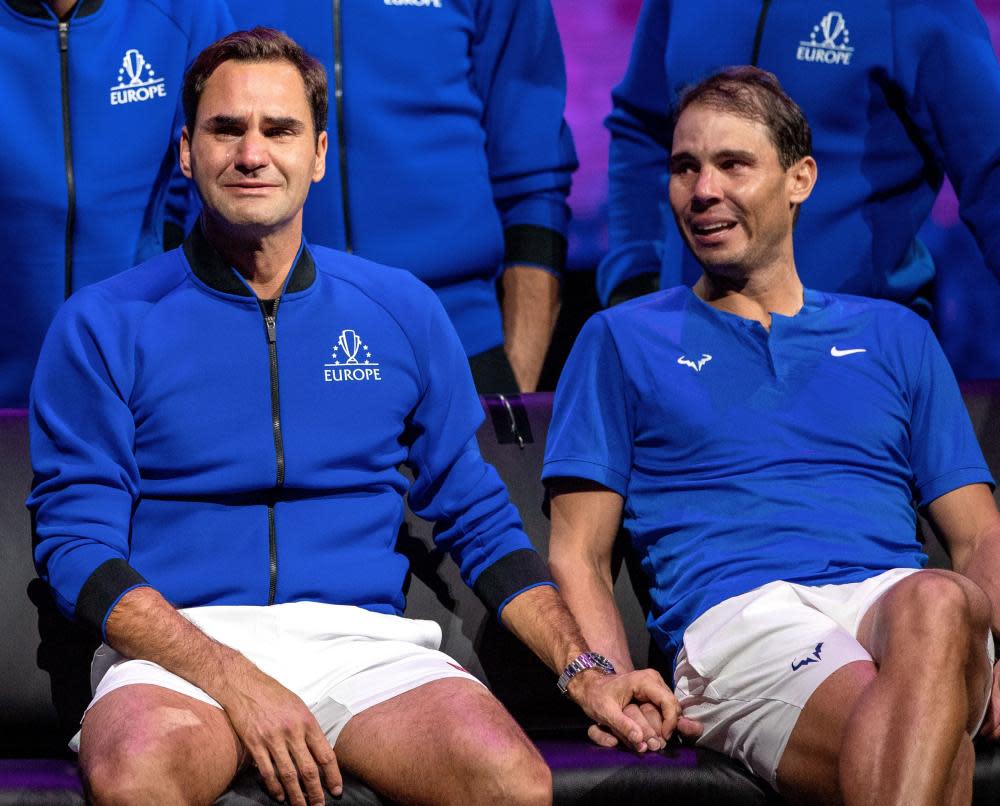Statistics prove Roger Federer’s class, but his love for his opponents shows his greatness

Has there ever been greater proof that nice guys finish first than Roger Federer?
As his career came to an end you could fill the centre court of Wimbledon with the pages written about his brilliance. His forehand – that liquid-whip as David Foster Wallace so famously described it – his serve, his one-handed backhand. Insert your favourite metaphor – use words like ballet, compare him not to other players but to painters. Compare him to mythology, he is less a man than a god who walked among us!
For the statistically minded, there is so much data you can lose yourself for days. Yes, the 20 grand slams, but for me the best was that he made the semi-finals of a grand slam 23 times in a row without missing a tournament due to injury or choice.
How long is that? Current world number one, Carlos Alcaraz would need to play and reach the final four in every slam until the French Open in 2028 to equal it. Maybe though he could aim lower and just reach the quarter-finals. He only needs to do that until the 2031 Wimbledon tournament to equal Federer’s record of 36 straight slams.
And yet for all the words about Federer’s play – and I have written my fair share – after the memories of the backhand and inside-out forehand fade, I will remember the sight of him after playing his final match sitting next to his longest and greatest rival, Rafa Nadal, both men in tears.
Sport, we are told, is war without bullets. Where winning isn’t everything, it is the only thing. Where beating your opponent means not just outplaying them but engaging in “mental disintegration”.
It is an environment where you may respect your opponent, but you really should not like them, and certainly not love them.
Related: Federer, fire and finesse at the Laver Cup – in pictures
In sport, toxic masculinity can take hold – not just by participants but by those watching. We see this of course most clearly in football (of any code) where players will be criticised for not looking as if they care enough, or they are not tough enough – criticism Federer himself was subject to in his early days.
And yet there were Federer and Nadal together in tears. Two men, who for 18 years had engaged in zero-sum competition. Nadal was not Federer’s coach or hitting partner. He was the man who frequently hit Federer off the court.
In the six years from the end of 2003 to the start of 2010 Federer was essentially unbeatable – except when he met Nadal, and especially when he met him on clay in Paris. Even worse Nadal then beat Federer at Wimbledon.
Talk about disrupting the narrative.
In tennis there is nowhere to hide; no one else to blame. Two enter, one leaves.
And here were two who have been against each other for the longest time, not just showing respect of each other, but love.
It says so much about both. Federer you can understand crying, because his career is over – all sportsmen and women do that (how can you not!). But for Nadal to cry says so much of both. How they have played how they have fought and how they have not lost their humanity to the lust for victory.
Before his match, Federer last week told the media of this career that in the early days he was told “you have to be tougher and not so nice maybe”. He recalled that “I tried, but it was all an act and I said, ‘Well let me try the nice way. Let’s see where it takes me’.”
It took him all the way, and it took us and sport with it. And we are all the better for it.

 Yahoo Movies
Yahoo Movies 
